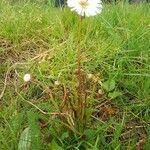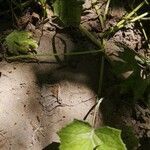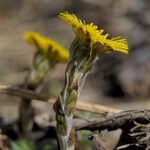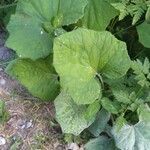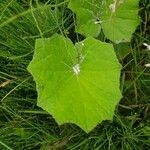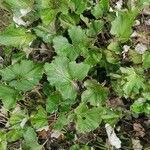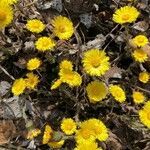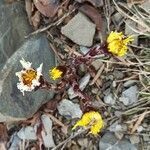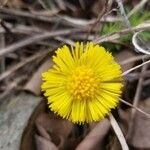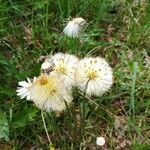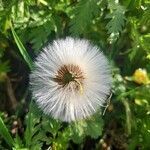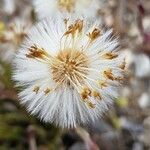Rhizomatous perennial 0.5–5 dm, the cauline bracts ca 1 cm; lvs long-petioled, cordate to suborbicular, with deep narrow sinus, callous-denticulate and shallowly lobed, 5–20 cm long and wide, glabrous above, persistently white-tomentose beneath; heads at first cylindric, expanding with maturity, the disk to 3 cm wide; invol 8–15 mm; rays very numerous, narrow, not much exceeding the invol and pappus; 2n=60. Native of Eurasia, naturalized in disturbed and waste places in ne. U.S. and adj. Can., w. as far as Minn., and s. to Md., Va., and Ky. Apr.–June.
A small plant that keeps growing from year to year. It grows 30 cm high and spreads 20 cm wide. The stem is erect, and downy. It is white with purple scales. The leaves appear after flowering. The leaves are wide "like a horse's hoof". They are heart shaped and 20 cm across. They are serrated around the edge and downy underneath. The flowers are yellow. They are large and at the top of the plant and occur singly. These open only in sunny weather.
